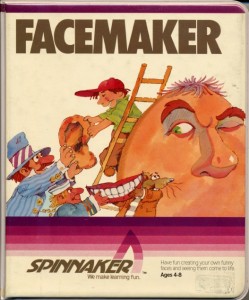I’ve been thrust back into learning styles, and saw an interesting relationship that bears repeating. Now you should know I’ve been highly critical of learning styles for at least a decade; not because I think there’s anything wrong with the concept, but because the instruments are flawed, and the implications for learning design are questionable.
This is not just my opinion; two separate research reports buttress these positions. A report from the UK surveyed 13 major and representative learning style instruments and found all with some psychometric questions. In the US, Hal Pashler led a team that concluded that there was no evidence that adapting instruction to learning styles made a difference.
Yet it seems obvious that learners differ, and different learning pedagogies would affect different learners differently. Regardless, using the best media for the message and an enlightened learning pedagogy seems best.
Even the simple question of whether to match learners to their style, or challenge them against their style has been unanswered. One of the issues that has been that much of the learning styles have been focused on cognitive aspects, yet cognitive science also recognizes two other areas: affective and conative, that is, who you are as a learner and your intentions to learn.
These two aspects, in particular the latter, could have an effect on learners. Affective, typically considered to be your personality, is best characterized by the Big 5 work to consolidate all the different personality characteristics into a unified set. It is easy to see that elements like openness and conscientiousness would have a positive effect on learning outcomes, and neuroticism could have a negative one.
Similarly, your intention to learn would have an impact. I typically think of this as your motivation to learn (whether from an intrinsic interest, a desire for achievement, or any other reason) moderated by any anxiety about learning (again, regardless whether from performance concerns, embarrassment, or other issue). It is this latter, in particular, that manifests in several instruments of interest. Naturally, I’m also sympathetic to learning skills, e.g learning to learn and domain-independent skills.
In the UK study, two relatively highly regarded instruments were those coming from Entwistle’s program of research, and another by Vermunt. Both result in four characterizations of learners: roughly undirected learners, surface or reproducing learners, strategic or application learners, and meaning/deep learners. Nicely, the work by Entwistle and Vermunt is funded research and not proprietary, and their work, instruments, and prescriptions are open.
I admit that any time I see a four element model, I’m inclined to want to put it into a quadrant model. And the emergent model from these three (each of which does include issues of motivation as well as learner skills) very much reminds me of the Situational Leadership model.
 The situational leadership model talks about characterizing individual employees and adapting your leadership (really, coaching) to their stage. They have two dimensions: whether the learner needs task support and whether they need motivational support. In short, you tell unmotivated and unskilled employees what to do, but try to motivate them to get them to the stage where they’re willing but unskilled and skill them. When they’re still skilled but uncertain you support their confidence, and finally you just get out of their way!
The situational leadership model talks about characterizing individual employees and adapting your leadership (really, coaching) to their stage. They have two dimensions: whether the learner needs task support and whether they need motivational support. In short, you tell unmotivated and unskilled employees what to do, but try to motivate them to get them to the stage where they’re willing but unskilled and skill them. When they’re still skilled but uncertain you support their confidence, and finally you just get out of their way!
This seems to me to be directly analogous to the learning models. If you chose two dimensions as needing learning skills support, and needing motivational support, you could come up with a nice two way model that provides useful prescriptions for learning. In particular, it seems to me to address the issue of when do you match a learners’ style, and when do you challenge; you match until the learner is confident, and then you challenge to both broaden their capabilities and to keep them engaged with challenge.
 So, to keep with the result that the UK study found where most purveyors of instruments sell them and have no reason to work together, I suppose what I ought to do is create an learning assessment instrument and associated prescriptions of my own, label the categories, brand it, and flog it. How about:
So, to keep with the result that the UK study found where most purveyors of instruments sell them and have no reason to work together, I suppose what I ought to do is create an learning assessment instrument and associated prescriptions of my own, label the categories, brand it, and flog it. How about:
Buy: for those not into it, get them doing it
Try: for those willing, get them to develop their learning skills and support the value thereof
My: have them apply those learning skills to their goals and take ownership of the skills
Fly: set them free and resource them
I reckon I’ll have to call it the Quinnstrument!
Ok, I’m not serious about flogging it, but I do think that we can start looking at learning skills, and the conative/intention to learn as important components of learning. Would you buy that?


